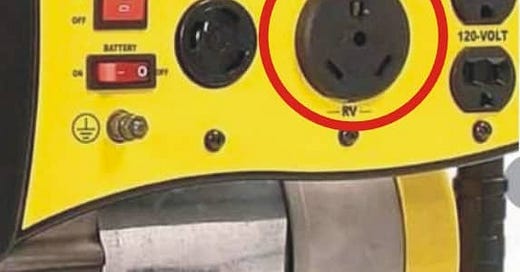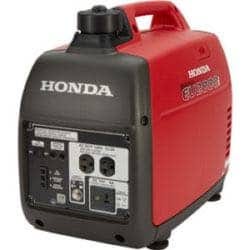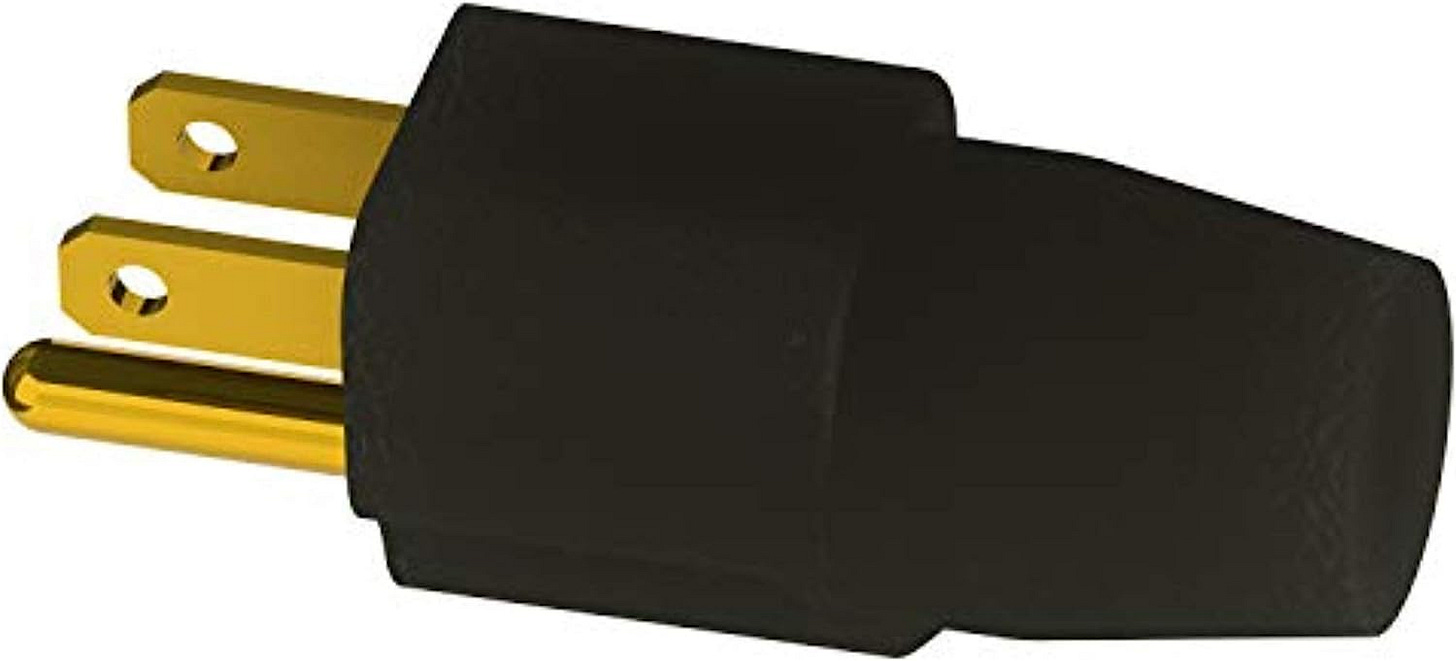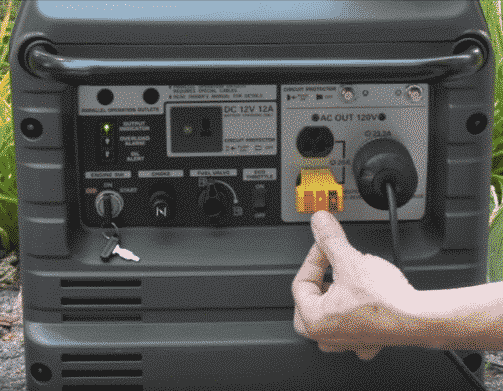Dear Mike,
I purchased a generator for the RV. It is a 3500-watt unit and came with an RV 30-amp outlet. I thought that it would tie the ground and neutral together but upon doing a continuity check on it all three poles are open. The generator does have an earth ground connection.
Do you recommend using the earth ground connection with a grounding rod and would a foot deep be adequate for a copper rod? Or should I just tie the ground and neutral together, and where would be the best place to tie together. Your help would be greatly appreciated. —Gary
Dear Gary,
This is something I’ve written about many times before, so I’ll condense it down into a few simple rules and link back to more complete articles if any of you need to dive in deeper.
What about a ground rod?
You DO NOT need to use an earth “grounding rod” for any portable generator that’s powering a single RV. However, if you’re using a large generator to distribute power to a number of RVs for a rally, that’s an entirely different thing which will require a grounding rod.
Very few (if any) inverter generators have a built-in Ground/Neutral bond. That’s generally not an issue, but it does complicate troubleshooting of electrical problems. And it will cause any EMS/Intelligent Surge Protector to shut down the power since it will interpret it as an open ground condition (which it is). There are lots of UL and NEC reasons for this, but just know that it’s normal for that style generator.
What’s a generator bonding plug?
The simplest way to Ground/Neutral bond a generator is to use the G/N plug I invented. Just plug it into any 15- or 20-amp outlet on the generator panel and it will bond the entire generator’s electrical system. Here’s a link to where you can purchase one on Amazon.
A generator transfer switch does the same thing…
No, this is not a cheater plug designed to fool anything. If you have a built-in generator on your RV, this same G/N bonding function is accomplished in the generator transfer switch.
Since you don’t have a transfer switch on your RV and are plugging in your shore power cord directly to a portable generator, the RV’s electrical system is expecting a G/N bond from that shore power connection. My G/N plug design just gives the RV electrical system what it expects, nothing more.
Testing a generator for a floating neutral
The easiest way to know if your generator has a floating or bonded neutral is simply by using a 3-light outlet tester. See my video on how this works HERE.
Let’s play safe out there…. Mike











What if the GFCI breaker of the receptacle with the neutral grounding plug trips. If something else is plugged into the 240V receptacle, is the generator still bonded?